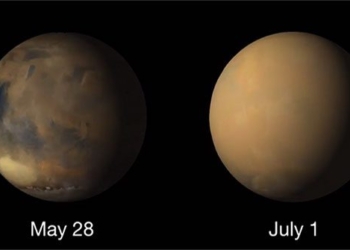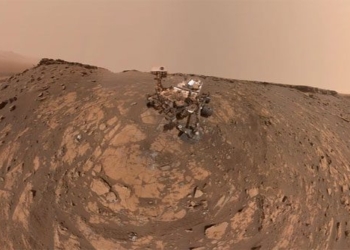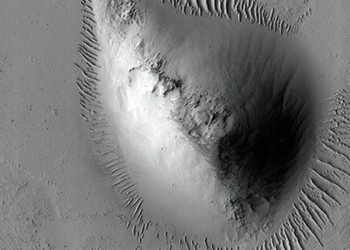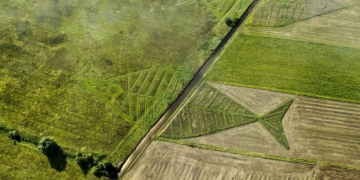Mars today is just a barren desert. However, much geological evidence suggests that water flowed across the surface of the Red Planet billions of years ago.
This water could have provided a favorable environment for life as we know it.
How did Mars lose all its water?
Compared to Earth, Mars is smaller and lighter, resulting in the Red Planet developing a limited gravitational field. This characteristic causes a significant portion of the nitrogen present in the atmosphere to escape rapidly.
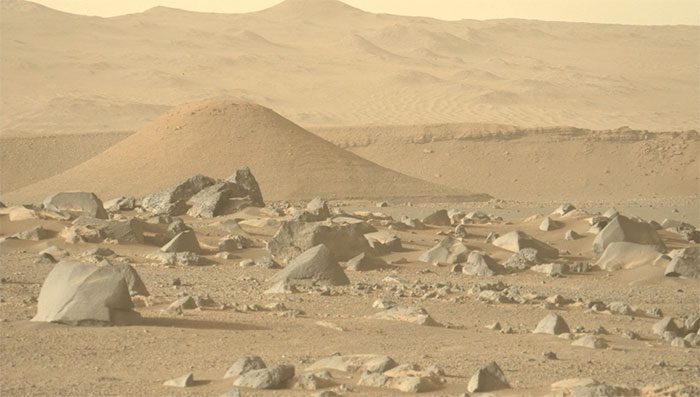
Mars landscape captured in 2022. (Photo: NASA).
This leads the planet to cool quickly, with the Martian core solidifying and resulting in the loss of its magnetic field.
Without a protective magnetic field, Mars is subjected to solar winds, gradually eroding its atmosphere. At the same time, volcanic activity diminished, preventing the release of gases, especially carbon dioxide, necessary to maintain a dense atmosphere.
The lack of nitrogen and carbon dioxide hindered the process of atmospheric renewal on Mars. The remaining gases eventually dissolved in liquid water, leading to a reduction in atmospheric pressure.
However, low atmospheric pressure makes it difficult to maintain water in liquid form. Thus, Mars’ water gradually turned into vapor. Solar radiation then contributed to breaking down these water molecules in the upper atmosphere.
Scientists believe that liquid water flowed on the surface of Mars for an extended period, possibly millions of years.
This idea is based on various geological observations, such as the presence of valley networks, fossil rivers, and dry lake beds, as well as evidence of minerals formed in the presence of water. These signals are positive for the possibility of life.
However, a new study challenges this notion.
A shorter wet past than expected
Recent data obtained from laboratory simulations and field observations suggest that the valleys on Mars may have resulted from the sublimation of carbon dioxide ice, rather than from the long-term activity of liquid water.
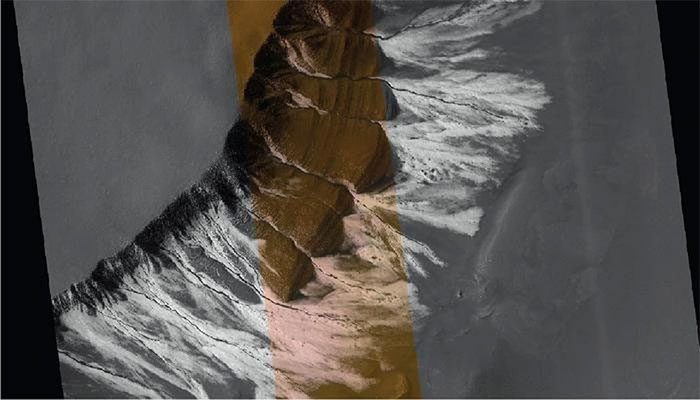
Valleys on Mars with carbon dioxide ice at their edges. (Photo: HiRISE).
This hypothesis is based on the idea that during winter on Mars, carbon dioxide present in the atmosphere will condense and form carbon dioxide ice. As temperatures rise in spring, this ice can sublimate directly into gas without passing through a liquid state.
This process occurs particularly rapidly due to the low atmospheric pressure on Mars.
Researchers have simulated these conditions in the lab to gain a better understanding of the sublimation of carbon dioxide ice in Martian environments.
The results show that this process could shape the Martian landscape in ways similar to the effects of water. This raises questions about the origins of some of the valleys observed on the Red Planet.
This research is significant for the search for life on the planet. It suggests that the period during which Mars had conditions favorable for life, at least on the surface, might be shorter than previously expected.
Of course, this does not mean that Mars completely lacks water; it only suggests that its role in shaping the landscape may be less significant than anticipated.








































